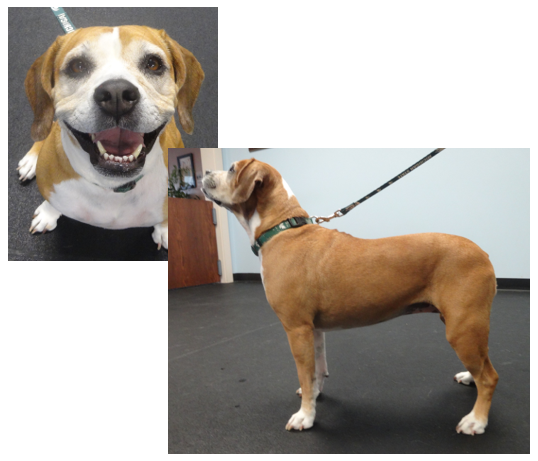Weight Loss for the Pampered Pooch
How to go from “Killing Them with Kindness” to “Winning at Weight Loss”!
We all love our pets, but do we really know the best way to show that love? How many times have you given your pet a little snack, either when you leave, when you get home, or both? I know I am definitely guilty of giving too many treats. Remember the phrase, “The way to the heart is through the stomach?” People have taken that saying to heart, but is this really the best thing for our pets? The Association for Pet Obesity Prevention states that in 2017 “an estimated 60% of cats and 56% of dogs in the United States are overweight or obese” (Ward, 2018). This means approximately 50 million dogs and 56 million cats are heavier than their ideal weight. So, what can we do to help our pets lose the extra weight?
Calories
First, we should think about how much we feed our pets. How many calories per day should your pet be eating, versus how many calories are they actually consuming daily? Unfortunately, this can be a very confusing topic for many pet parents. Many people do not know how many calories their pet needs to consume in a day. Dog food manufacturers give an approximate caloric intake on their packaging, however, that approximation is not appropriate for all pets. The recommended caloric intake listed on a dog food bag is normally tailored to active, intact, male dogs. Most of our pets are not intact and all have varying degrees of activity. The Association for Pet Obesity Prevention has a useful Daily Caloric Needs Chart for both dogs and cats (the chart can be found here).
Daily kilo-calories for a dog at ideal weight:
- 10 lb dog = 162 kcal/day
- 50 lb dog = 585 kcal/day
- 100 lb dog = 1200 kcal/day
*Please contact your veterinarian or Pawsitive Steps for more information if you think your pet’s calories does not match up.
Treats
Next, we can take a look at the little snacks we give our pet throughout the day. Many of the treats we give our pets have a surprisingly high number of calories! Instead of giving extra treats, we can give hugs and kisses, praise, or play their favorite game with them. If you are worried that your pet will be bored while you are gone, instead of giving them a chew bone or treat, you can try putting their regular meal into a food puzzle or kong to help keep them occupied. When exercising or training your pet, you can take a portion of their daily meal and use that as a reward, in place of a high calorie treat. If you
do want to give your pet the occasional treat, that is okay to do, so long as it’s on an infrequent basis. Also, make sure when you do give treats that they make up for less than 10% of the total allotted calories per day for your pet.
Common examples of treats for dogs:
- Small Milk bone = 20 calories per treat
- Large Milk bone = 115 calories per treat
- Small Busy Bones = 366 calories per treat
- Large Busy Bones = 732 calories per treat
- 1 TBS of Peanut Butter = 81 calories
- 1 Baby Carrot = 4 calories
- ¼ cup of Green Beans = 9 calories
Common examples of treats for cats:
- Friskies Party Mix = 1.5 calories per treat
- Whiskas Temptations = less than 2 calories per treat
- Sheba Meaty Tenders Treat Stick = 17 calories per treat
- 1 oz of Cheddar Cheese = 113 calories
- 1 slice of bacon = 43 calories
Activities
Another great way to help your pet win at weight loss is to get up and active! This is a fun way to pass the time and show love to your pet. A brief walk is an easy way to spend time together. You can also play fetch, tug-o-war or enroll your pet in training classes. If your pet has mobility limitations, you can try playing some brain games or even teach them a new trick (even old dogs certainly can learn new tricks). Looking for some new ways to get active with your pet? We can help! At Pawsitive Steps Rehabilitation and Sports Medicine, we can create individualized weight loss and fitness programs.
Please remember to contact your veterinarian before starting any exercise or weight loss program, as there may be medical issues that need to be addressed first.
Additional Resources
- How Do I Love Thee? Fun Ways to Show Our Pets Love, February 2016 blog
- Ups & Downs of Weight Loss for Pets, January 2016 blog
by Jennie Houghteling, LVT
